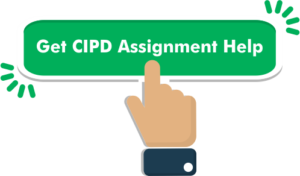
Evaluating Learning and Development Activities
Learning and development is an essential aspect of every organization as it helps to impart technical skills to identify the learning needs among the employees, design and deliver the L &D activities, and ultimately evaluate the outcome. As an HR professional, one may specialize in L & D, which encompasses improving the competency of the workforce.
3ELD is concerned with the evaluation of the learning and development activities, and it will prepare you to understand thoroughly the reasons for the assessment of the L & D activities and approaches to conduct the process. Without L & D evaluation, the employer may continue with weaknesses and miss the opportunities for improvement. Read through to understand more about Evaluating L & D activities.
What is the Expected outcome of 3ELD?
You must understand the expected outcome for the 3ELD, which indicates what your tutor expects you. This also gives a glimpse of the concepts that should guide you in providing answers. On completing this course, you will be expected to: responses should show mastery on:
- Show understanding of the purpose and practices that L & D professionals engage in.
- Identify and collecting information that is necessary for the evaluation of the L & D activity.
- Analyze evaluation information as well as presenting the findings through appropriate recommendations.
You are expected to understand the above-stated concepts that revolve around the evaluation of Learning and development activities. However, in your responses, you need to provide specific answers.
The guideline here covers some essential aspects that are handy in the completion of 3ELD, of course, you can get customized service from us- this is a guideline.
Activities in 3ELD
Broadly, there are two activities that you will complete, with each having subsections. Activity 1 revolves around the theories and practices regarding the evaluation of L & D practices.
In activity 2, you’ll demonstrate how you apply different evaluation skills. This section has five subsections where you’ll respond. In this section, you’ll need to apply different approaches to evaluation.
Critical reasons for evaluating Learning and Development Activities
In your explanation, you are expected to explain some of the justifications for you to evaluate learning and development activities. To pass in this section, you are expected to provide at least two reasons. Evaluation of learning and development should be associated with learning needs. As such, in response, you ought to be guided by the learning needs, which should determine your purpose of evaluating L & D.
Some of the answers that you can provide include gauging customer satisfaction, continuous improvement, and level of compliance with the regulatory requirements. Gauging customer satisfaction could be a reason for the evaluation of the L & D activity is training for better customer service. At the same time, training for regulatory compliance should be a reason for such training.
Different Levels and Approaches to Evaluating L & D Activities
There are different levels of evaluation for your L & D, which are well explained based on various theories. Based on the Kirkpatrick Model, there are four levels: reaction, learning, behavior, and results. In the reaction phase, it provides an opportunity to determine the thoughts and experience from the training.
The second level of evaluation learning, which should be characterized by the knowledge and training experience. The third level should encompass behavioral change and improvement. The final level of evaluation is based on the results.
Different types of evaluation can be applied for L & D depending on the issue that is being evaluated as well as the purpose. The basic distinction in the evaluation is the types: a formative or summative evaluation.
Criteria for Evaluating a specific Learning and Development Activity
If the organization undertaking L & D does not undertake a proper evaluation to determine the effectiveness of the training activities, it does not specify how well the program achieved the intended purpose. In doing the evaluation, it is necessary to use proper criteria:
- Assessment of the reaction of Participants
- Level of changes in the participant’s Knowledge and Skills.
- The change in attitude of the L & D participants
- Observable change in job performance
- Changes in organizational Performance
The impact of the L & D should not only be based on individual performance, but it should ultimately lead to organizational improvement. Besides, the criterion range encompasses both subjective assessments to objective assessment.
Information required for the Evaluation and Appropriate Methods
You require information for the evaluation of L & D, as well as apply the appropriate collection methods. Data could be qualitative or quantitative, and the choice depends on what is being assessed. On this note, to conduct a proper evaluation, different data collection methods can be used: document analysis, surveys, and interviews making an observation, or collecting data from focus groups.
The choice of the method of information should be guided by the kind of evaluation that is being conducted. For instance, to determine the improvement in employee performance, it may entail document analysis, which will use quantitative information.
Selecting and Applying Tools for Collecting Evaluation Information
Your tutor will expect you to demonstrate your understanding and ability to collect the evaluation information. The first thing is to understand the kind of evaluation you are undertaking to determine the choice of data collection tool. For instance, to determine the extent of an improvement in the level of customer satisfaction, one can collect data using a survey, which will provide quantitative data.
To determine if there is an improvement in company performance, one can evaluate the financial performance by conducting document analysis. In this case, you need to demonstrate your ability to develop a questionnaire or formulating interview questions. You need to understand how to analyze financial statements by financial ratios and other metrics.
Summary
3ELD course revolves around Evaluating Learning and Development activities. To pass this unit, you need to have a proper understanding and background of the learning and development. As such, the purpose of L & D is to improve the competency of employees by enhancing their skills and knowledge.
Failure to conduct a proper evaluation of the L & D would mean that the team leading the activities would continue with the approaches that exhibit weaknesses while not taking advantage of the available opportunities. There are different approaches to conduct the evaluation, which determines the type of tools to use. Some of the choices include questionnaires, interviews, observation, and document analysis, among others.
References
Cordingley, P. (2015). The contribution of research to teachers’ professional learning and development. Oxford review of education, 41(2), 234-252.
Guskey, T. R. (2014). Planning professional learning. Educational Leadership, 71(8), 10.
Kirkpatrick, J. D., & Kirkpatrick, W. K. (2016). Kirkpatrick’s four levels of training evaluation. NY: Association for Talent Development.
Cleveland, B., & Fisher, K. (2014). The evaluation of physical learning environments: A critical review of the literature. Learning Environments Research, 17(1), 1-28.





CIPD Assignment Level 3 Assignment Help | CIPD Help
[…] Evaluating Learning and Development Activities (3ELD) […]